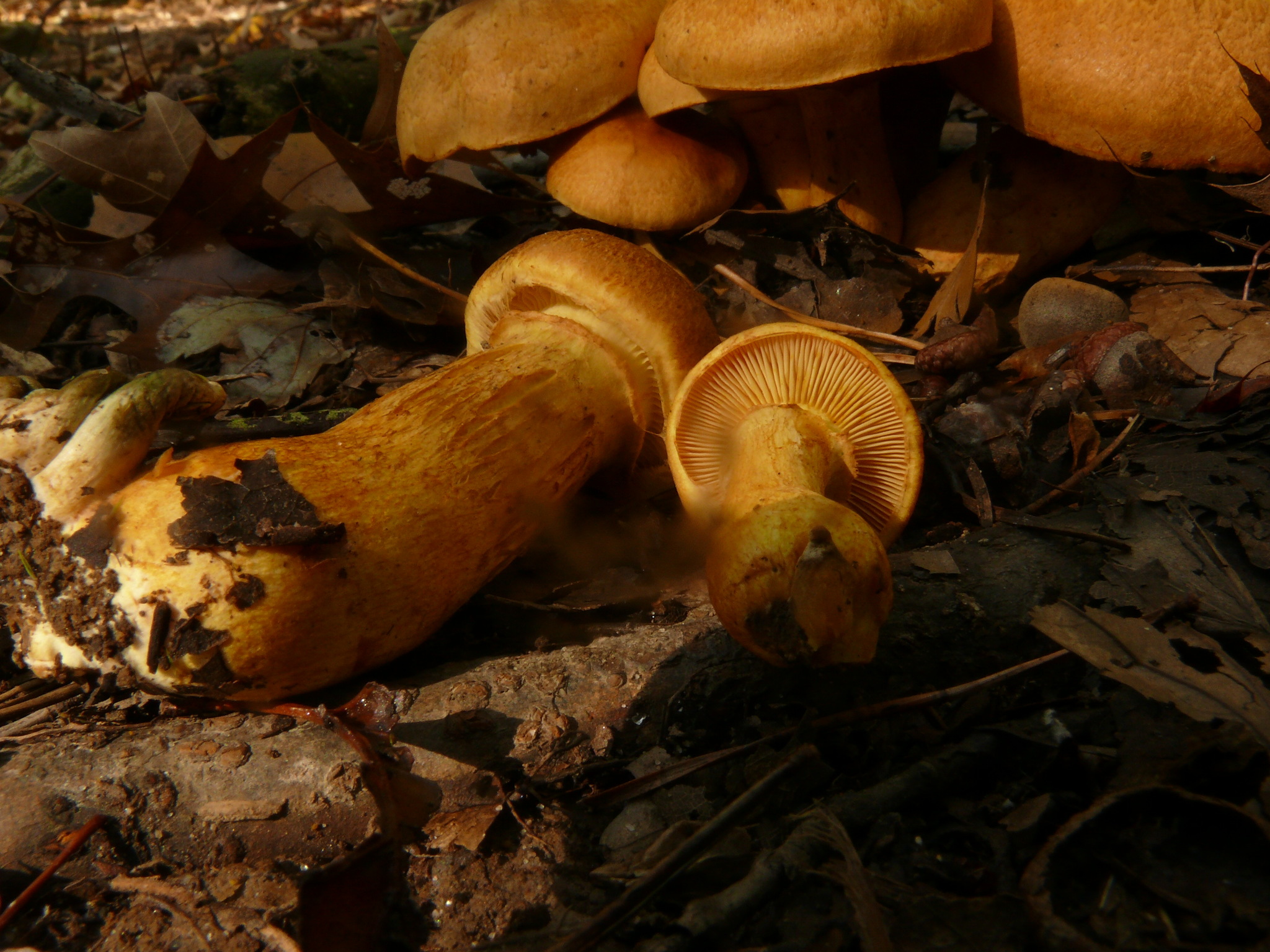Map Snapshot




6 Records
Status
Gymnopilus subspectabilis is most similar to Gymnopilus luteus and both may occur in Maryland. Gymnopilus subspectabilis lacks the anise scent characteristic of G. luteus.
Seasonality Snapshot
Source: Wikipedia
This article may require cleanup to meet Wikipedia's quality standards. The specific problem is: This article isn't written right. (October 2023) |
| Gymnopilus subspectabilis | |
|---|---|
| Scientific classification | |
| Domain: | Eukaryota |
| Kingdom: | Fungi |
| Division: | Basidiomycota |
| Class: | Agaricomycetes |
| Order: | Agaricales |
| Family: | Hymenogastraceae |
| Genus: | Gymnopilus |
| Species: | G. subspectabilis
|
| Binomial name | |
| Gymnopilus subspectabilis Hesler (1969)
| |
| Gymnopilus subspectabilis | |
|---|---|
| Gills on hymenium | |
| Cap is convex | |
| Hymenium is adnexed or adnate | |
| Ecology is saprotrophic | |
| Edibility is psychoactive | |
Gymnopilus subspectabilis, commonly known as the big laughing mushroom, laughing gym, or giant gymnopilus, is a species of agaric fungus in the family Hymenogastraceae which contains the hallucinogenic drug psilocybin.
It is known to grow singly or in large clumps on stumps and logs. While very similar visually to Gymnopilus junonius, this large gym has a scaly cap or occasionally a fibrous or almost smooth cap and prefers hardwoods. These large mushrooms can often be found on stumps and roots growing in large clumps or singly.
Cap: 2 3⁄16"–6 13⁄16" convex to flat with an inrolled margin when young. Dry scaly or finely fibrillose especially toward the edge, becoming more scaly with age. Pale yellow with grayish or brownish orange bruises and discoloration
Gills: broadly attached, white to pale yellow with brownish orange to light brown stains where bruised.
Stem: 3 3⁄8″–3 7⁄8″ tall and 1⁄2″–3⁄4" thick. Pale yellow above the annulus and below is the same color but with gray orange discoloration. Parallel sides but tapered sharply at the base, occasionally swelling in the middle, moist, nearly scaly or finely fibrillose. Annulus is thin and membranous, almost fibrous evidence of it persisting to maturity often. Flesh is pale yellow developing brownish orange colors near the base
Spores: Rusty brown, ellipsoid, roughened or wrinkled, with distinctly conical points, darkening in KOH 7.1–10×4.4–6.2 μm
Habitat: saprotrophic on hardwoods mainly stumps and roots
Microscopic features: pleurocystidia 21–37.3 μm long 3.8–7.2 width, scattered flask or bowling pin shaped and cheilocystidia 23.2–37.2 μm long 4.1–8.6 μm width, swelling in the center sometimes or shaped like a flask. Caulocystidia abundant above the annulus produced in dense clusters directly on the stem, bowling pin shaped occasionally cylindrical but with a distinctive head 20.1–47.5 μm long 3.8–9.3 μm width. Basidia are 4 spored club shaped to cylindrical usually constricted near the center 26.3–37.9×6.6–9.3 μm
KOH: spores darken in KOH
Taste: Bitter
Odor: strong mushroom odor
Look alikes:
- Galerina marginata (deadly) light brown spores
- Omphalotus illudens (toxic) yellow spores
- Tricholomopsis sp. (Inedible) cream colored spores
- Cortinarius sp. (Potentially toxic) rusty spores
See also
[edit]



